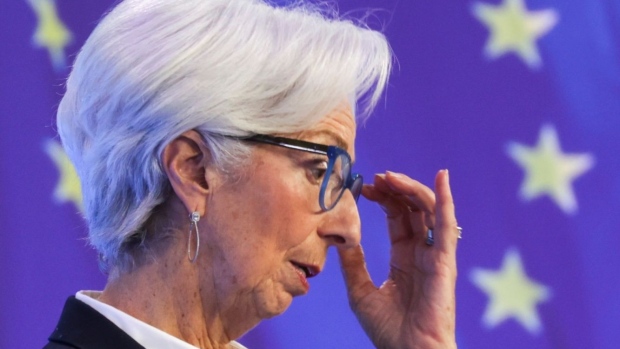Jul 20, 2022
What to Watch for When ECB Unveils Its Anti-Fragmentation Tool
, Bloomberg News

(Bloomberg) -- When the European Central Bank unveils a new bond-purchase program to ensure interest-rate increases won’t stoke speculation in the debt of Italy other weaker members, the details will be crucial.
How much of which assets policy makers are prepared to buy, and under what kind of circumstances and conditions, are elements still being debated by the Governing Council ahead of Thursday’s decision. Many details may remain secret when President Christine Lagarde unveils the plan, to bolster its effectiveness.
Here are the most important features to watch out for to gauge the firepower of the new tool:
Size
Unlimited purchases would be the ultimate commitment. Legal concerns will probably force policy makers to define some boundaries, whether that’s about specific amounts, or limits in relation to a country’s debt stock (so-called issuer limits).
Conditionality
Any involvement of the ECB won’t come for free. Benefiting governments are likely to have to offer something in exchange for purchases — be it a vague commitment to sound fiscal policies or a more solid compliance with a set of targets and rules. A key consideration will be whether the ECB is prepared to assess itself whether countries fulfill necessary conditions, or whether other institutions such as the European Commission or the region’s rescue fund will make such judgments.
Triggers
This is the one piece of information every trader wants to know, and no one is likely to find out. It’s likely to be the ECB equivalent to a state secret. Scale and speed of yield increases will be important, but that may well be as much as policy makers are prepared to say.
Balance-Sheet Impact
An effect of pretty much zero is the consensus outcome here, though there are various ways of getting there. The ECB can drain funds it creates in liquidity-absorbing operations, in what’s called sterilization. It could also sell bonds it acquired under different programs. Or it could sell debt certificates, which it’s legally allowed to but has never done (and probably won’t want to get into now).
Assets
It goes without saying that the focus of the program will be sovereign debt, but a previous tool designed to address market fragmentation and ensure policy transmission also included private-sector bonds. Also interesting will be whether the ECB limits interventions to certain maturities. The famous OMT backstop unveiled under former President Mario Draghi focused on the shorter end of the yield curve.
Duration
Two things are of interest in this category: the time any specific bond will stay on the ECB’s balance sheet, and whether the program itself has an expiration date. The former involves views on whether maturing debt should be rolled over, the latter a broader debate over whether the central bank needs a permanent tool alongside interest rates to set monetary policy in the soon-to-be 20-nation zone.
Timetable
It’s taken the ECB more than half a year to get to the point of unveiling the tool, and it may take much longer before any purchases are made. Weeks passed between the recent announcement and the actual activation of a more flexible reinvestment regime under a previous program. If the ECB publishes a legal act authorizing the tool, that might signal its intentions to use it imminently. The absence of such a document would at least suggest a delay, or even hold out the possibility that the central bank won't buy anything at all.
Read more
- ECB Aims for Bulletproof Crisis Tool Anticipating Legal Showdown
- Lagarde’s Moment of ECB Crisis Reckoning, in a London Basement
- Lagarde Redoubles Push on New ECB Tool to Reach Deal This Week
- Why Europe Needs New Tools for Bond ‘Fragmentation’: QuickTake
©2022 Bloomberg L.P.





